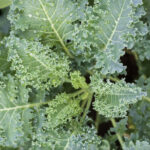 If there is one question that wine-lovers enjoy debating, it is, “Where does the best wine in the world come from?”
If there is one question that wine-lovers enjoy debating, it is, “Where does the best wine in the world come from?”
Almost always, California emerges as a serious contender. With its Napa cabernets and chardonnays, pinot noirs from the Russian River Valley to the Santa Maria Valley and an influx of Italian and Rhône varietals, there is a wine for every palate. The one grape considered the elder statesman of Golden State wine is zinfandel. This black grape arrived on the West Coast shortly after the Gold Rush began. It not only slaked the 49ers’ thirst, but was a commercial success in the big Central Valley where it was grown for raisins.
The origin of this fruit is Mediterranean Europe. In Italy, the grape known as primitivo is an earlier ripening clone of our beloved zin. The first vines have been traced back to Croatia, where it was called tribidrag in the local dialect. In 2001, this oldest variety was rediscovered growing along the Dalmatian coast and, since, has become available in American markets.
Back in California, the zinfandel grape was saved from the ravages of Prohibition by its use in the production of communion wine and the aforementioned raisin industry. Today, this reason, along with the plant’s durability, is why zin vines are the oldest in the state.
Planted with other grapes in plots that were harvested together, this California “field blend” was bottled in bulk and sold throughout the country under a variety of names. Nowadays, there is more interest in a pure wine that reflects the true terroir, or growing site traits, of the grape. A single-vineyard, old-vine zin attracts attention not only because such wine is very hard to find, but because it shows a complexity of flavors and structure that is not found in younger grapes.
When it comes to food, the key word here is barbecue. Red zin is described as “brambly” or “briary,” words that bring to mind fresh berries picked on a hot day or the scent of a newly opened jar of jam. It matches perfectly with any beef, pork or fowl cooked in the tradition of the American South.
But wait. What is white zinfandel? This easy drinking quaff is a blush that burst onto the California wine scene in the 1970s. Originating from Sutter Home Wineries, it was supposed to become a dry rosè in the tradition of southern France. However, an anomaly called “stuck fermentation” allowed the juice to retain a higher level of sugar. History was made as white zin became hugely popular, outselling its red brother by a margin of 10 to one.
To many enthusiasts, white zinfandel is not a serious wine. For summer sipping, though, it is perfect, light in body and low in alcohol, best enjoyed chilled and with finger foods. As a first wine, it is a good choice and has a rich history. It’s just a little pale.
Keep sipping, Steve.





